Making the ultimate elderflower jam in a bucolic place that 'is everything the English countryside should be'
Delicate yet fragrant elderflowers make a jam that tastes like an English summer–especially when married with gooseberries, finds Tessa Waugh
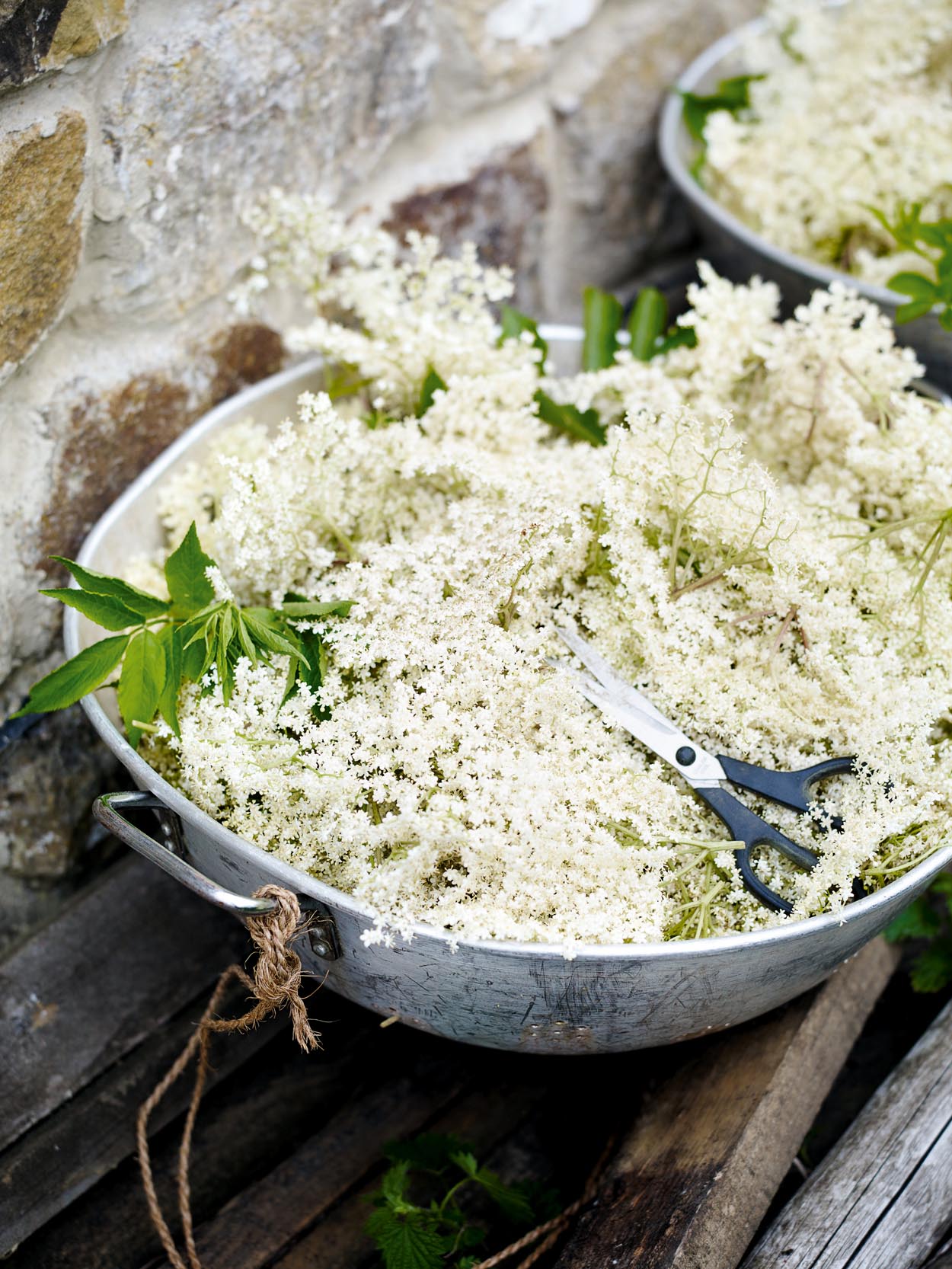
There is a special point in an English summer when the season is at its most beautiful. This is elderflower time, when creamy blossoms decorate the hedgerows like bridal bouquets in a sea of green.
Country people have a long tradition of harnessing these fragrant blooms to flavour jams and cordials and Elspeth Biltoft of Rosebud Preserves has more experience than most. When I visit Rosebud Farm, Mrs Biltoft’s home and business headquarters in the village of Healey, North Yorkshire, she tells me about her childhood at Maske in Swaledale. ‘I grew up helping my father make jellies from wild fruit,’ she recalls.
‘Crab-apple jelly infused with garden herbs, such as mint and rosemary, and country wines such as dandelion. My father also brewed his own beer, which he stored in gallon demi-johns and I would help him make marmalade — all from traditional recipes.’
Article continues below the recipe
Gooseberry-and-elderflower jam recipe
Ingredients
Makes 12 x 227g jars
For the elderflower liquor (enough for three batches)
- 3kg golden granulated sugar
- 2½ pints water
- Juice and zest of 1 lemon
- 500g elderflower heads (gently washed)
For the jam
Exquisite houses, the beauty of Nature, and how to get the most from your life, straight to your inbox.
- 1 pint water
- 2kg fresh, washed gooseberries
- 2kg golden granulated sugar
- ½ pint elderflower liquor
Method
For the elderflower liquor
- Place the sugar and water into a heavy-based saucepan. Cook on a medium heat and stir occasionally until it starts to boil, then add the juice and grated zest of 1 lemon and return to the boil. Tip the mixture into a heatproof bowl and set aside to cool. Once completely cold, add the freshly picked and washed elderflowers.
- Give everything a good stir, making sure all the elderflower is covered. Leave to steep in the fridge for a week, rotating every day. After a week, push the mixture through a fine sieve, then divide the syrup into half-pint portions and freeze.
For the jam
- Place your jars in a preheated oven at 50˚C, then put the water and gooseberries into a heavy-based saucepan. Bring the gooseberries to the boil over a low heat, stirring occasionally. The slower you do this, the better, so as to ensure the skins are not tough. Once boiling, cook for 3–4 minutes. Add the sugar and keep stirring until the sugar has dissolved, then add the pre-made elderflower liquor.
- Increase the temperature to high and fast boil for 20–25 minutes, until the jam has reached 103˚C. Pour into a heatproof container and leave for 10 minutes, for the jam to distribute and for it to become richer in colour.
- Decant into your heated jars and cap immediately. Once cooled, label your jam jars with the name and date. Store in a dark, cool environment, so as not to spoil the colour. The jam will last for about a year.
Mrs Biltoft and her team pick all the elderflowers they need for their gooseberry-and-elderflower jam by hand each summer. The blooms, which start to flower in June and carry on until mid July, are harvested from the hedgerows and woods near the farm, often thanks to tip-offs from friends as to where the most prolific bushes are located. ‘The best are not necessarily in the same place each year, but we always pick with the permission of the landowner,’ she explains.
It is a dry, slightly cloudy day — perfect conditions for foraging — as we head out along the village high street armed with baskets, scissors and walking sticks. Mrs Biltoft is clearly in her element, pointing out the pretty gardens of her neighbours. ‘I love working along the hedgerows, watching the tortoiseshell butterflies and the shield bugs. It is everything the English countryside should be,’ she enthuses.
We pass through a gate and into a field grazed by sheep. At the edge is a wood containing a deserted water mill and the holy grail: abundant boughs of elderflower swaying gently in the breeze. Mrs Biltoft gets to work quickly, deftly demonstrating her method of picking from the taller branches by drawing the boughs down with her walking stick. ‘Always pull gently at the end where it is more pliable, to avoid snapping the branch,’ she emphasises. ‘You are looking for creamy white heads with a dusting of greeny-yellow pollen. That is where the flavour lies.’
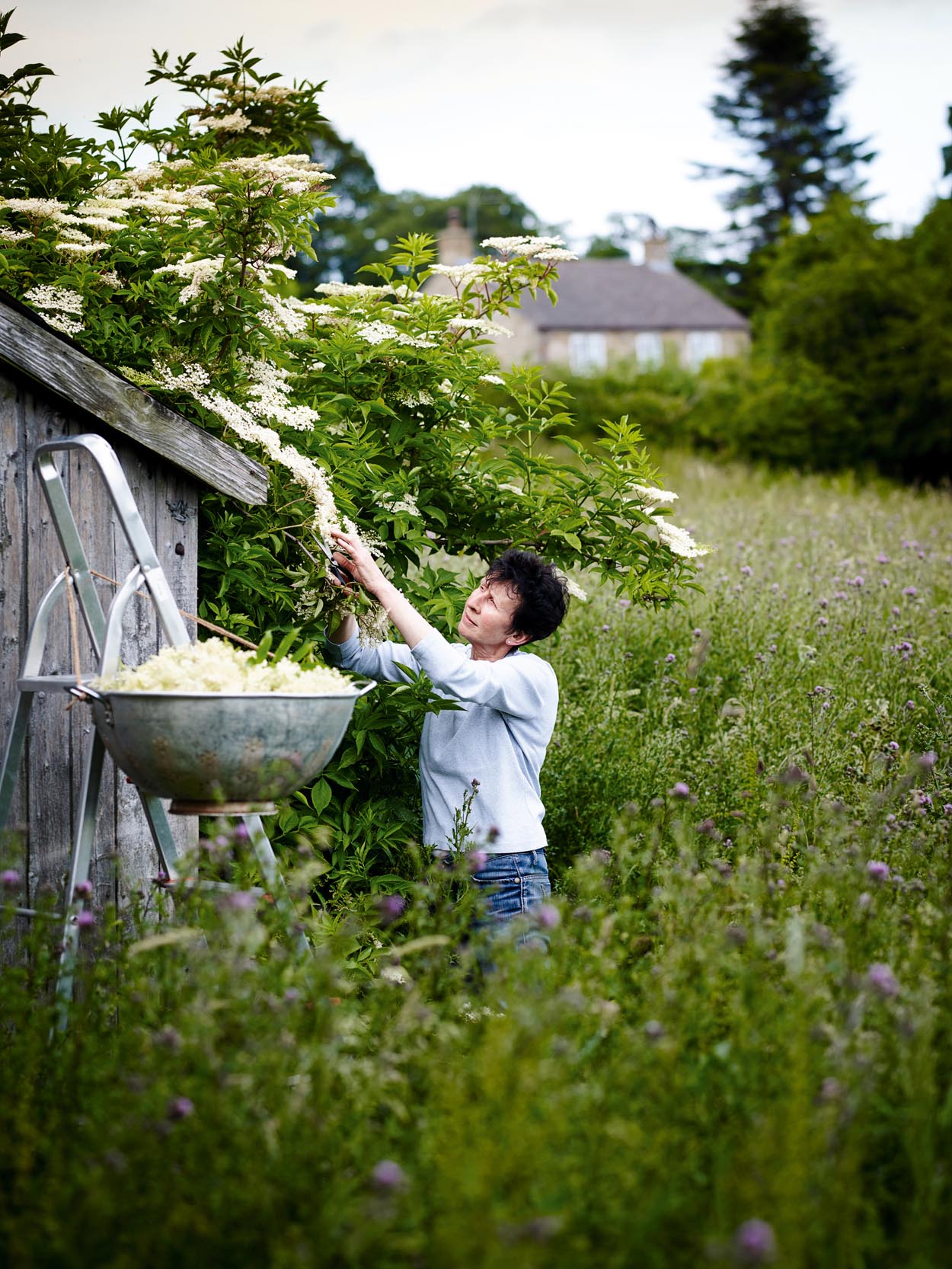
Pointing at a larger flower, she adds: ‘If you find one with a head the size of a tea plate, you know they’ll be good.’ However, if the pollen is brown, the flowers have gone too far. ‘Anything that smells stale, like cat pee, is also beyond its best,’ she advises. Having drawn the bough down, Mrs Biltoft finds a perfect specimen and cuts just below the umbel — the common point at which all the short flower stalks extend — and it isn’t long before we are heading home with baskets full of blooms.
Back at the farm, my guide demonstrates how she lays the blossom out in the shade for a couple of hours ‘so that all the beetles and insects can walk away’. Afterwards, the heads are washed and submerged in a mixture of sugar and water, then kept in the fridge, where they are turned every day. It took a while to get the correct strength of flavour from the elderflower, admits Mrs Biltoft, who eventually discovered that steeping the flowers in the fridge for seven to nine days was the most effective way of allowing the flavour to shine. After a week, the mixture is sieved to get rid of every petal — then, it is ready to use.
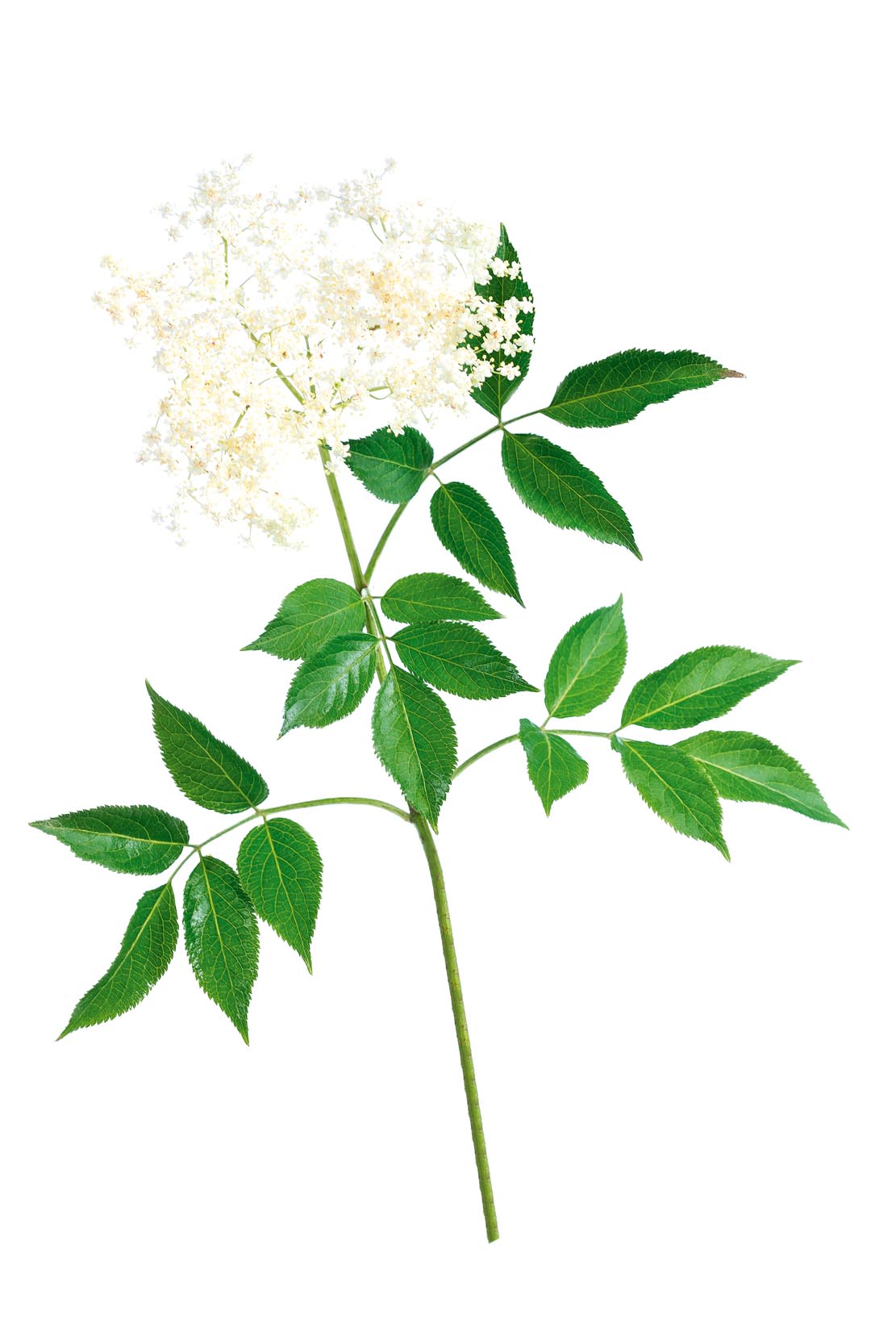
Next, she sets about making the jam with practised ease, adding gooseberries and water to a pan. ‘Sugar has a toughening effect on fruit, so everything with a hard skin has to be softened.’ Afterwards, we add the sugar and the elderflower liquor from an earlier batch. Sugar has to be dissolved at a low heat, otherwise it crystallises, so Mrs Biltoft feels for any undissolved grains with the asbestos fingers of a woman who has cooked jam all her life. Having dissolved the sugar, she brings the jam to a rolling boil and we gaze into the saucepan as the mixture changes colour from a fresh gooseberry green, to honey and then chestnut brown.
Although she is largely loyal to the old ways, Mrs Biltoft is not an advocate of the flake test — dropping a splodge on a dish and pushing it with your finger to see if it ripples — to check whether it’s set. Instead, she recommends investing in a jam thermometer and letting the mixture boil until it has reached the required temperature of 103˚C. After half an hour of boiling, the mixture reaches the magic number and she sets it aside to cool before we pour it into jars. The taste is sharp, then sweet — a piquant explosion of flavour followed by the unmistakable hint of elderflower.
Despite her passion for making jam, Mrs Biltoft confesses that she doesn’t have a sweet tooth herself, ‘although I can’t resist a little bit of jam on a scone every now and then’.
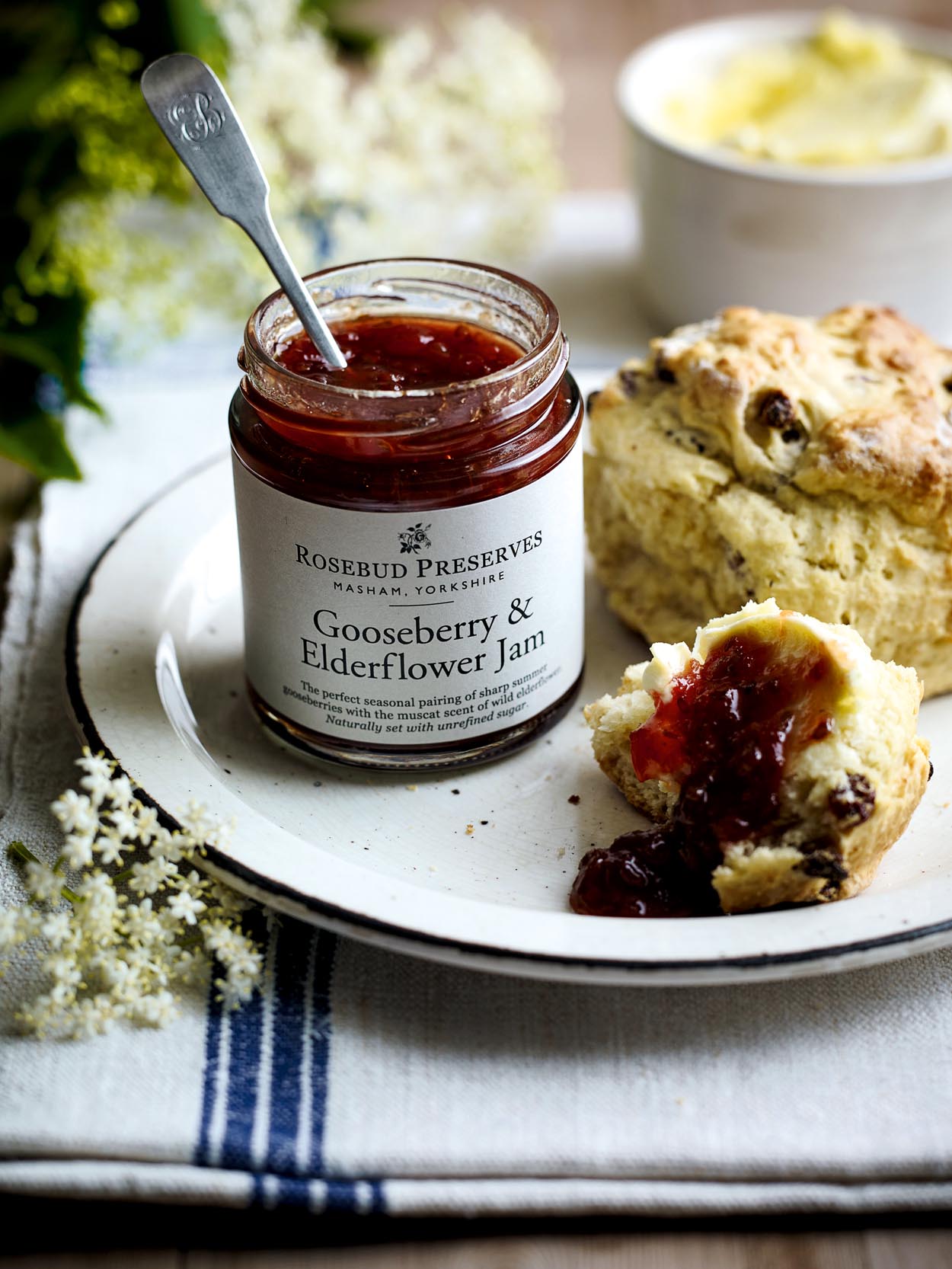
The Rosebud Preserves chef, John Barley, suggests pairing the jam with smoked mackerel, because the sharpness is a perfect foil for the sweetness of smoked fish. Elderflower-and-gooseberry semifreddo is another of his recommendations, together with elderflower liquor mixed with vodka and lemonade to make a refreshing cocktail. All exquisite tastes of an English summer that can be enjoyed year round.
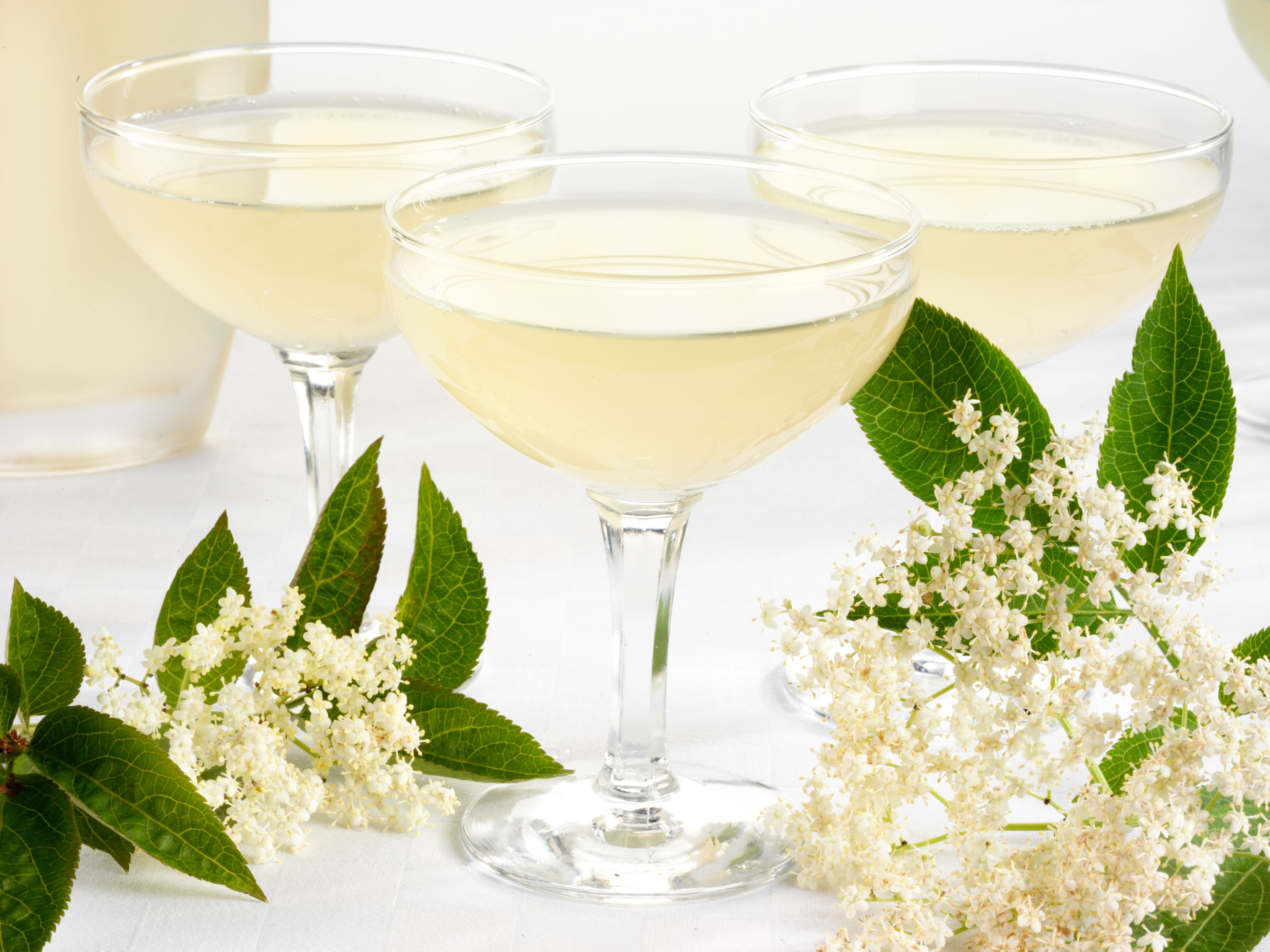
Credit: Alamy
How to make Ed Brown's Elderflower 'Champagne'
Ed Brown is arguably Britain's top expert on elderflowers — and here's his favourite method for turning them into something
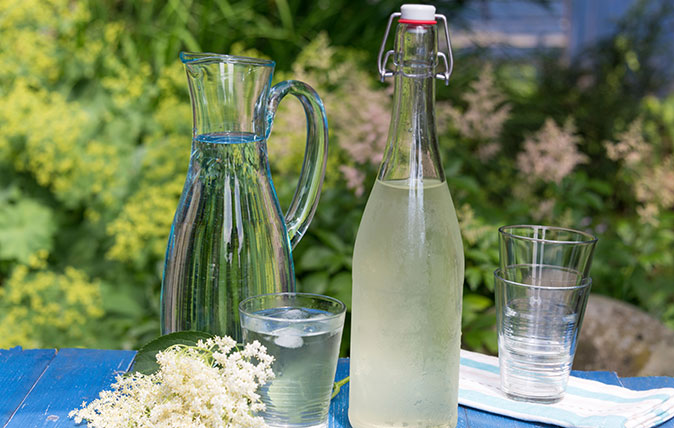
Credit: Alamy - Elderflower cordial - home made
How to make elderflower cordial and wine
The English summer is thought to start when the elder blossoms and ends when the berries ripen. Country Life recommends
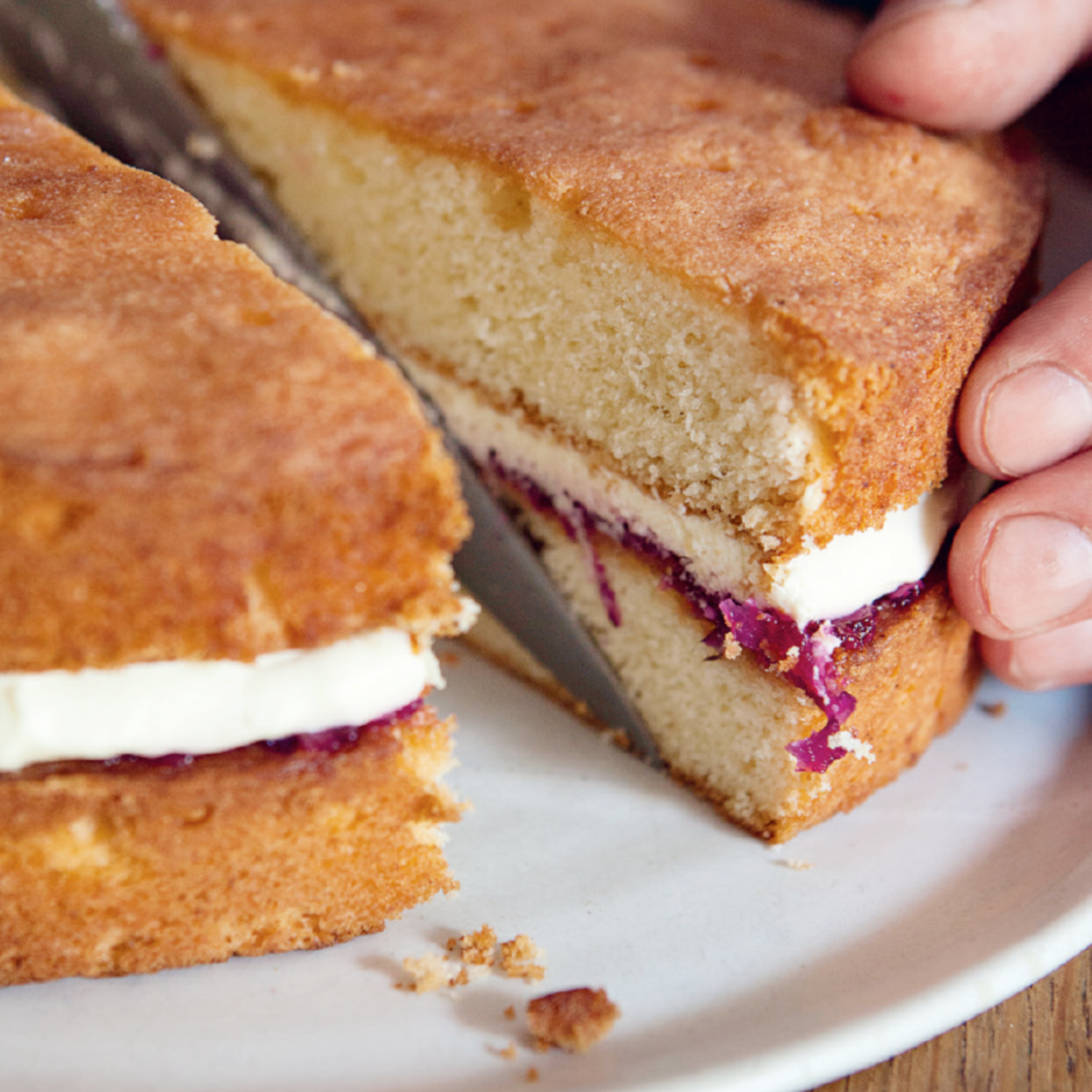
How to make elderflower drizzle cake, by Michelin-starred chef Tommy Banks
Tommy Banks, head chef at The Black Swan at Oldstead, shares a delicious summery recipe to make the most of
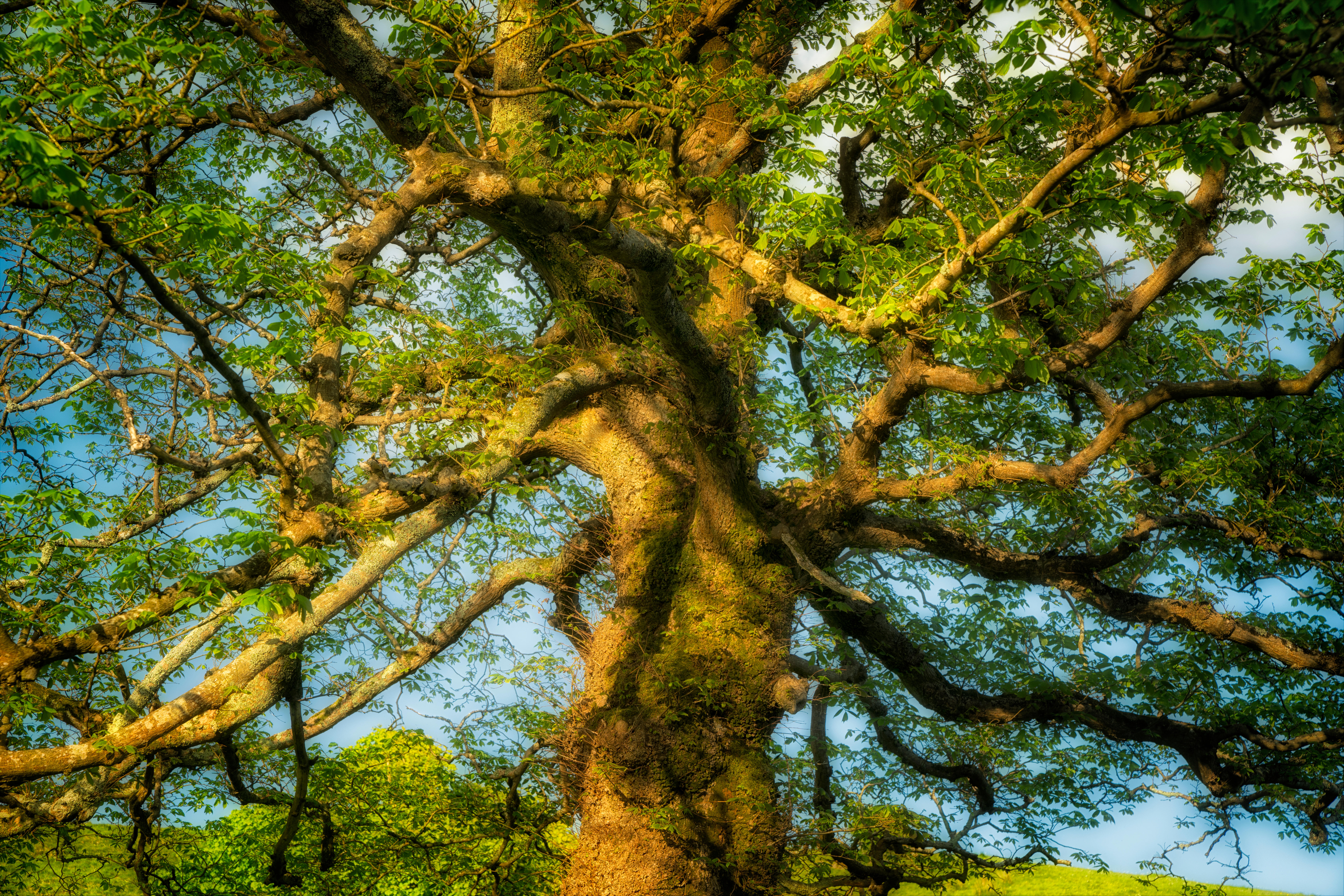
The history of the elder tree: From deities and dryads to Shakespeare and J.K. Rowling
Does our love of a tall glass of elderflower cordial speak of an ancient connection with the tree itself, wonders
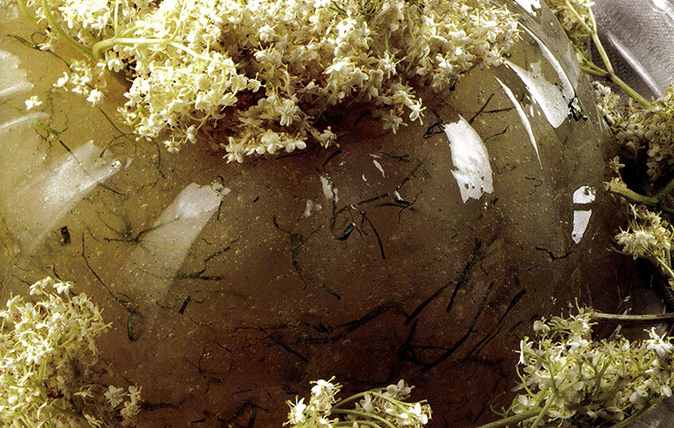
Tom Aitken's elderflower and lemon jelly
Make the most of the summer flavours – and put some away for winter.